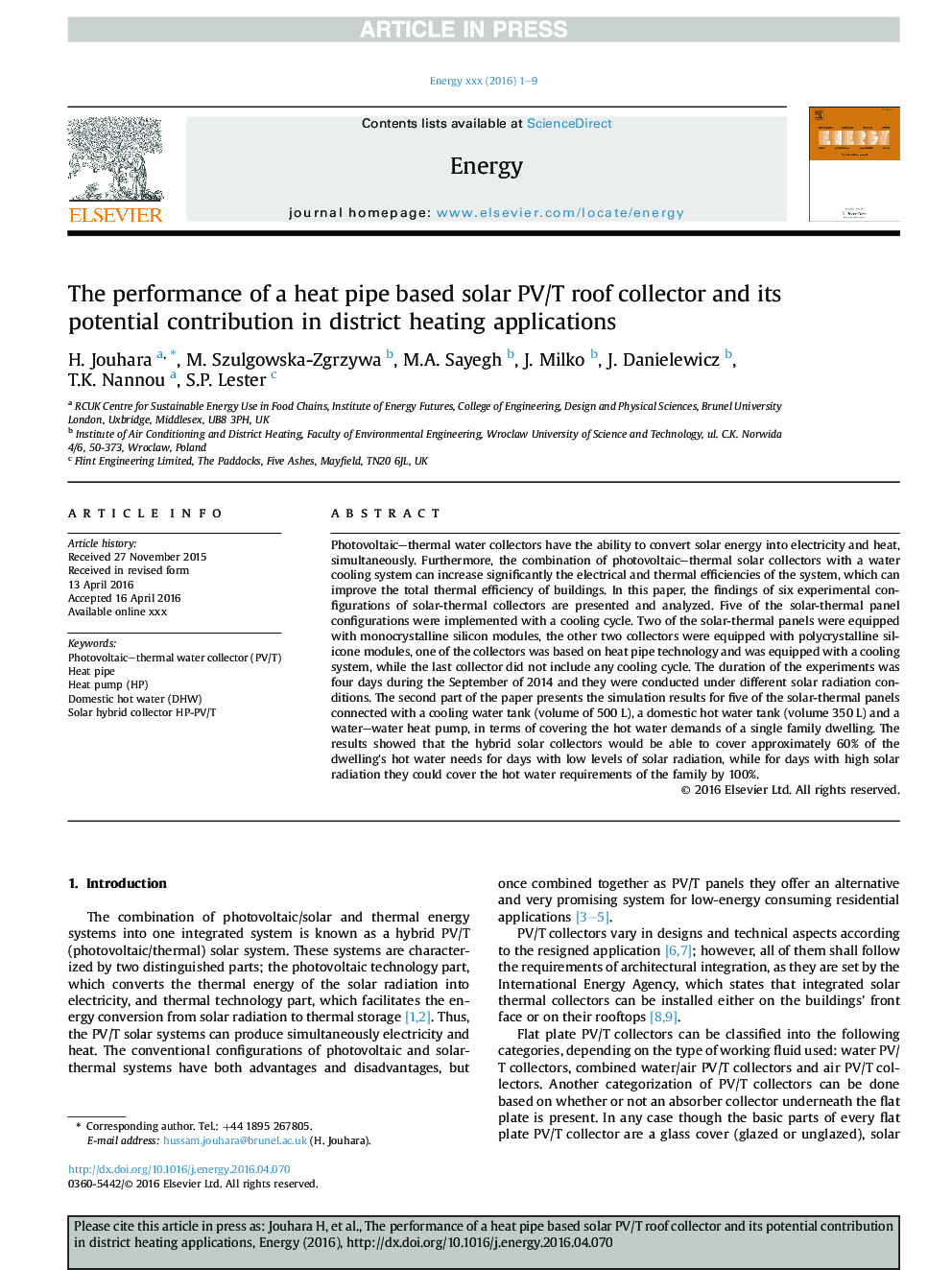| Article ID | Journal | Published Year | Pages | File Type |
|---|---|---|---|---|
| 5475721 | Energy | 2017 | 9 Pages |
Abstract
Photovoltaic-thermal water collectors have the ability to convert solar energy into electricity and heat, simultaneously. Furthermore, the combination of photovoltaic-thermal solar collectors with a water cooling system can increase significantly the electrical and thermal efficiencies of the system, which can improve the total thermal efficiency of buildings. In this paper, the findings of six experimental configurations of solar-thermal collectors are presented and analyzed. Five of the solar-thermal panel configurations were implemented with a cooling cycle. Two of the solar-thermal panels were equipped with monocrystalline silicon modules, the other two collectors were equipped with polycrystalline silicone modules, one of the collectors was based on heat pipe technology and was equipped with a cooling system, while the last collector did not include any cooling cycle. The duration of the experiments was four days during the September of 2014 and they were conducted under different solar radiation conditions. The second part of the paper presents the simulation results for five of the solar-thermal panels connected with a cooling water tank (volume of 500Â L), a domestic hot water tank (volume 350Â L) and a water-water heat pump, in terms of covering the hot water demands of a single family dwelling. The results showed that the hybrid solar collectors would be able to cover approximately 60% of the dwelling's hot water needs for days with low levels of solar radiation, while for days with high solar radiation they could cover the hot water requirements of the family by 100%.
Keywords
Related Topics
Physical Sciences and Engineering
Energy
Energy (General)
Authors
H. Jouhara, M. Szulgowska-Zgrzywa, M.A. Sayegh, J. Milko, J. Danielewicz, T.K. Nannou, S.P. Lester,
